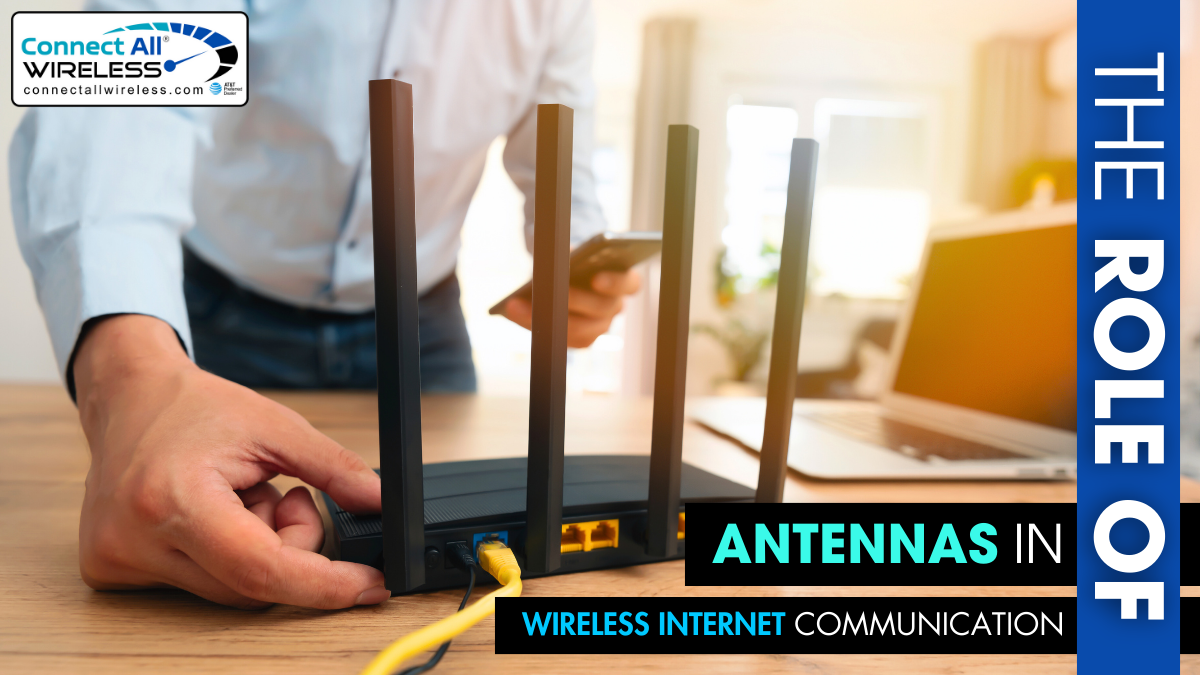The Role of Antennas in Wireless Internet Communication
May 4, 2024In the realm of wireless internet communication, antennas play a pivotal role in ensuring the efficient transmission and reception of signals. Whether it’s accessing Wi-Fi on your smartphone, streaming videos over cellular networks, or connecting IoT devices to the internet, antennas are the unsung heroes behind the scenes. In this article, we delve into the importance of antennas in wireless internet communication, exploring their functionality, types, and significance in enabling seamless connectivity.
Understanding Antennas:
At its core, an antenna is a device designed to transmit or receive electromagnetic waves. In the context of wireless internet communication, antennas serve as the interface between electronic devices and the surrounding electromagnetic field. When transmitting data, antennas convert electrical signals into electromagnetic waves that propagate through the air or other mediums. Conversely, when receiving data, antennas capture incoming electromagnetic waves and convert them back into electrical signals for processing.
Functionality of Antennas in Wireless Internet Communication:
The primary function of antennas in wireless internet communication is to facilitate the transmission and reception of signals between devices. Whether it’s a Wi-Fi router broadcasting internet access to nearby devices or a smartphone communicating with a cellular tower, antennas are responsible for establishing and maintaining the connection. Antennas achieve this by emitting or capturing electromagnetic waves within specific frequency ranges, depending on the wireless technology being used.
Types of Antennas:
Antennas come in various shapes and sizes, each designed for specific applications and environments. Some common types of antennas used in wireless internet communication include:
- Dipole Antennas: These antennas consist of two conductive elements, typically arranged in a straight line. Dipole antennas are widely used in Wi-Fi routers and other short-range wireless devices due to their simplicity and omnidirectional radiation pattern.
- Yagi-Uda Antennas: Also known as directional antennas, Yagi-Uda antennas are characterized by their beam-like radiation pattern, which focuses signals in a specific direction. These antennas are commonly used in long-range communication applications, such as point-to-point links and cellular base stations.
- Patch Antennas: Patch antennas are compact, flat antennas commonly used in devices with limited space, such as smartphones and IoT devices. These antennas offer a good balance of performance and size, making them ideal for embedded applications.
- Parabolic Antennas: Parabolic antennas consist of a dish-shaped reflector and a feed antenna located at the focal point. These antennas are known for their high gain and narrow beam width, making them suitable for long-distance communication, satellite links, and microwave backhaul.
Significance of Antennas in Enabling Seamless Connectivity:
The significance of antennas in wireless internet communication cannot be overstated. Without efficient antennas, it would be impossible to establish reliable connections between devices, leading to poor network performance and degraded user experience. Whether it’s ensuring strong Wi-Fi coverage throughout a building or enabling high-speed cellular data access in remote areas, antennas play a critical role in bridging the gap between users and the internet.
Optimizing Antenna Performance:
To maximize the performance of wireless internet communication systems, it’s essential to optimize the design and placement of antennas. Factors such as antenna type, orientation, polarization, and placement can significantly impact signal strength, coverage area, and data throughput. By carefully selecting and configuring antennas based on the specific requirements of the application, engineers can ensure optimal performance and reliability.
Challenges and Advances in Antenna Technology:
Despite their importance, antennas face several challenges in the context of wireless internet communication. These challenges include interference, multipath propagation, signal attenuation, and environmental factors such as obstacles and weather conditions.
However, ongoing research and development efforts are driving advances in antenna technology, leading to innovations such as smart antennas, adaptive beamforming, and MIMO (Multiple Input Multiple Output) systems. These advancements hold the promise of further enhancing the efficiency and reliability of wireless internet communication in the years to come.
Conclusion:
In conclusion, the role of antennas in wireless internet communication is paramount, serving as the backbone of seamless connectivity in our increasingly connected world. As we strive for the best WiFi internet services in Michigan and beyond, understanding the functionality, types, and significance of antennas is crucial. These devices enable reliable transmission and reception of signals, ensuring strong Wi-Fi coverage, high-speed cellular data access, and connectivity for IoT devices.
Despite facing challenges such as interference and signal attenuation, ongoing advancements in antenna technology continue to drive improvements in performance and reliability. By optimizing antenna design and placement, engineers can maximize signal strength, coverage area, and data throughput, enhancing the overall user experience. As we look to the future, antennas will remain at the forefront of innovation, shaping the landscape of wireless communication and connectivity for years to come.


